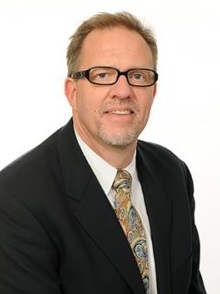How to Overcome Disparities in Wound Care
It’s well-documented and broadly acknowledged that there are disparities in healthcare, but it’s less clear what can be done to address them. One major disparity is among patients with chronic wounds and resultant amputations. These conditions are more prevalent among people with limited education and low socioeconomic status. But we can make a difference—one patient at a time.
For a short time, the medical community believed that nonhealing wounds and amputation rates were higher because of the COVID-19 pandemic and patients’ reluctance to visit clinics and other public places. But rates are still rising. It’s clear that other reasons are preventing patients from seeking care and following through.
Inflation’s impact on health care
In order to understand disparities in wound care, we must acknowledge the role of social determinants of health, specifically socioeconomic status.
Many patients had problems affording care due to cost before the pandemic. But the problem appears to be getting progressively worse. Inflation is further squeezing personal budgets, with costs rising for food, rent, transportation, child care, and more. These rising costs all disproportionately affect vulnerable populations. Patients sometime have to choose between dinner and an antibiotic.
New data from a Gallup poll show financial concerns are preventing many people from seeking the medical attention they need, such as wound care. Among respondents, 38% said they put off treatment due to cost, up 12 percentage points from 2021. Of those people, 27% said the medical treatment they needed but delayed was for a very serious or somewhat serious condition. According to Gallup’s analysis, the groups most likely to delay care due to cost were those with lower incomes, younger adults, women.
A second recent Gallup poll indicates that less than half of the U.S. population now rates U.S. healthcare quality as excellent or good, and one of the most significant problems people cited was cost.
What can healthcare providers do to help mitigate healthcare disparities?
The problem is systemic and complex, and it may seem insurmountable. However, implementing a few strategies into your practice can help.
Ask the tough questions
Many providers are not comfortable asking patients whether they can afford and access the medications and supplies they need. If you prescribe dressings, bandages, and antibiotics, but the patient cannot access or pay for those items, then that person is at high risk of not coming to subsequent appointments—the first step down the path of a nonhealing wound and its associated complications.
So you have to simply ask: “Do you have a way to get these supplies?”
Involve a social worker
Once you identify a barrier, get a social worker involved. This role should be one of the key participants in a wound care team, but many practitioners don’t realize the many ways social workers can help this patient population.
Social workers have knowledge of and access to many resources that can help you and your patients overcome disparities in wound care, including home health, meal-delivery programs and food banks, shelters, geriatric transportation, free supplies, and copay assistance. You can also get your institutional finance department involved and potentially offer payment plans.
Call your no-shows
A pre-COVID analysis of Healogics data examined and compared outcomes at 480 of its wound care clinics (N = 180,336 chronic wounds). It found that centers with lower performance on wound healing had more patients who were Black, had lower incomes, and had less education. The higher-performing centers had the opposite patient demographics: fewer minority populations, higher income levels, and higher education levels.
Importantly, analyses found that centers with lower performance were able to mitigate against the effects of these social determinants when they ensured that patients attended weekly visits. Regular clinic attendance brought healing levels back up to the corporate average.
This highlights how important it is that patients follow up and attend appointments. When they don’t show up, call them and help them figure out how to get in.
Practice cultural sensitivity
The Agency for Healthcare Research and Quality offers resources for “Improving Cultural Competence to Reduce Health Disparities for Priority Populations.”
A particularly salient point for wound care is to be culturally sensitive with people who may not want you to see a wound or remove clothing. Ask your patient what would make them most comfortable (but still let you help them).
In addition, be aware that wounds appear differently in various skin tones. Although early, localized signs of infection might include redness or streaking on light skin, you may not be able to see redness on dark skin. Instead, you often have to rely on increased warmth, increased pain, and increased drainage. Similarly, you might look for blanchable erythema to identify an early pressure ulcer on light skin, but that won’t work on many people with dark skin.
Refer to a Wound Care Center®
If you believe that these barriers are preventing your patient from getting the wound care they need, consider referring to a Wound Care Center®.

By William J. Ennis
William J. Ennis, DO, MBA, MMM, CPE, is chief medical officer of Healogics, the nation’s leading provider of advanced wound care. He also serves as the Catherine and Francis Burzik Professor of Wound Healing and Tissue Repair and chief of the Section of Wound Healing at the University of Illinois at Chicago’s Division of Vascular Surgery.
